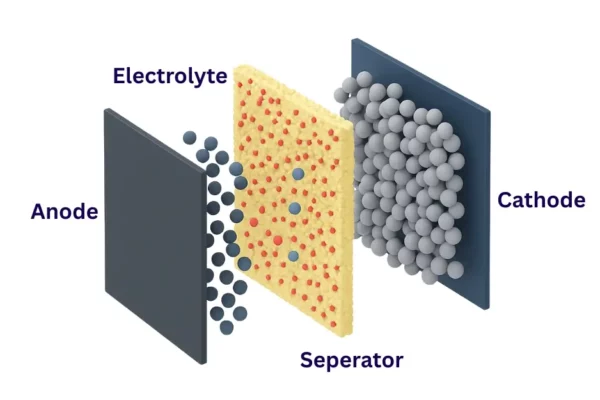Powder coating has become a preferred method for enhancing functionality and applying durable finishes to a variety of substrates, from automotive components to industrial machinery. However, the latest advancements in PVD (Physical Vapor Deposition) technology are transforming the way we think about coating processes. This innovative approach not only improves the quality and precision of coatings but also brings significant environmental benefits.
What is PVD coating of Powders?
While powder coating has long been a reliable solution for finishing materials, the introduction of PVD powder coating technology is pushing the boundaries even further. Physical Vapor Deposition (PVD) powder coating technology is a cutting-edge process that combines the benefits of powder coating with the precision and efficiency of PVD to create high-performance, durable, and eco-friendly coatings. Powder coating is widely used in various industries, including electronics, automotive, aerospace, pharmaceuticals, and energy storage. PVD coating of powders takes place inside a vacuum chamber, where the powder or pellets are loaded into a vibratory bowl, also known as a fluidizer. The fluidizer continually agitates the powder to ensure the full surface of the powder is exposed to the plasma deposition. By applying thin films or nanoparticles to powders and pellets, PVD technology delivers uniform, high-quality, and high-performance coatings that are both environmentally friendly and cost-effective. [1]
Why choose Nikalyte NL-Powder Coating System?
As industries demand higher performance, precision, and sustainability in coating processes, the Nikalyte’s NL-Powder Coating System (NL- PCS) emerges as a top-tier choice. With advanced features designed to meet these needs, this system sets a new standard in the coating industry.[7]
Key Benefits:
- Repeatable and uniform Coatings : NL- PCS offers high precision in the deposition of powder coatings. The vibratory bowl design ensures that powders and pellets are fluidized throughout the entire coating process to guarantee uniform coverage across the entire surface of powders and pellets. This results in consistent and repeatable coatings with exact control over the mass loading and quality of the applied layers.
- Chemical-Free Process: Unlike traditional coating methods that rely on chemicals or solvents, NL- PCS is a chemical-free process. It uses high-purity metals and gases to create inorganic thin films and nanoparticles without producing harmful chemical waste.
- Superior Durability and Hardness: PVD coatings are known for their exceptional durability. The inorganic thin films applied through PVD are typically harder and more resistant to wear, abrasion, and corrosion than traditional coatings. This makes NL- PCS coated powders and pellets ideal for use in industries requiring high-performance, such as automotive, electronics, and aerospace.
- Control Over Mass Loading and Thickness: The quartz crystal microbalance used in many PVD systems allows for precise control over the mass loading of the coating. This ensures that the thickness of the inorganic thin film or nanoparticle coating is exactly what is required for the application.
- Versatility with Materials: NL- PCS can be used to coat a wide variety of materials, from metals like platinum (Pt), copper oxide (CuO), and nickel oxide (NiO) to rare materials like iridium oxide (Ir2O3) and ruthenium (Ru). This makes PVD an ideal solution for industries working with diverse substrates or high-performance applications.
- Reduced Environmental Impact: NL- PCS processes produce minimal residue and generate very little waste compared to traditional wet coating methods. Additionally, the coatings applied are often free of volatile organic compounds (VOCs), which contribute to pollution and environmental harm.
- Enhanced Performance for High-Tech Applications: In industries like electronics, pharmaceuticals, and energy storage, the properties of PVD coatings, such as electrical conductivity, thermal stability, and catalytic properties are crucial. It improve the efficiency and reliability of components like semiconductors, fuel cells, batteries, and drug delivery systems.
- In-Situ Plasma Cleaning for Enhanced Adhesion: Many advanced PVD systems include in-situ plasma cleaning, a process that removes contaminants and ensures that the surface is perfectly prepared for coating. This step significantly improves the adhesion of the thin film or nanoparticle coating, leading to better performance and longer-lasting results.
- Scalability and Flexibility: NL- PCS offers various bowl capacities up to from 0.1L up to 20L or more making them suitable for both small-scale and larger-scale production runs. The systems are also highly customisable, allowing manufacturers to fine-tune the process to suit their specific needs.
- Improved Product Quality and Consistency : NL- PCS offers high levels of control over the coating process, from the initial surface preparation to the final layer deposition. The process results in uniform and repeatable coatings with high-quality finishes, ensuring consistent product performance over time.
Applications of Powder Coating Technology
- Energy Storage and Catalysis: For batteries and fuel cells, powder coatings improve electrical conductivity and efficiency. To improve catalytic activity, stability, and performance, crucial for both renewable energy solutions and electric vehicles. [2]
- Electronics : Semiconductor components and circuit boards are coated to improve conductivity and thermal stability. As electronics continue to shrink in size while becoming more powerful, powder coatings help to manage heat dissipation and improve performance and reliability. [3]
- Automotive and Aerospace: Powder coatings are applied to engine parts, brake systems, and turbochargers to enhance wear resistance, corrosion protection, and thermal stability. These industries demand coatings that can withstand extreme environments and deliver the durability needed for these critical applications.[4]
- Pharmaceuticals: Drug delivery systems use coated microspheres. These coatings help to control the release rate of active pharmaceutical ingredients which improves bioavailability and patient outcomes.[5]
- Industrial Equipment : Powder coatings enhance wear resistance, corrosion protection, and overall durability equipment. These coatings ensure that parts last longer and perform better in demanding environments.[6]
Conclusion
If you’re looking to stay ahead of the curve, Nikalyte’s NL-Powder Coating System offers the ideal solution. With its chemical-free process, precision mass loading control, and repeatable results, this system ensures that your coatings meet the highest standards of quality and performance. If you’re ready to take your coating processes to the next level, the NL-Powder Coating System is your key to a sustainable, eco-friendly, and efficient future in powder coating.
Contact us today to speak to our technical experts.
References:
- Du, Z., Wen, S., Wang, J., Yin, C., Yu, D., & Luo, J. (2016). The review of powder coatings. Journal of Materials Science and Chemical Engineering, 4, 54–59. https://www.scirp.org/journal/paperinformation?paperid=65087
- (2024). Critical importance of powder coatings in driving an electric future. Interpon. Powder Coatings in Electric Vehicles: White Paper | Interpon
- Orville, T., Tajwar, M., Bihani, R., & Saha, P. (2024). A review of techniques for effective thermal management in power electronics. https://papers.ssrn.com/sol3/papers.cfm?abstract_id=4858468
- Bogdan, M., & Peter, I. (2024). A comprehensive understanding of thermal barrier coatings (TBCs): Applications, materials, coating design and failure mechanisms. Metals, 14(5), 575. https://www.mdpi.com/2075-4701/14/5/575
- Salawi, A. (2024). Pharmaceutical coating and its different approaches, a review. In B. H. Vilsinski, D. M. B. Murtinho, & A. J. M. Valente (Eds.), Pharmaceutical Coating (Vol. 1, pp. 1-15). Pharmaceutics. Pharmaceutical Coating and Its Different Approaches, a Review
- Kaosar Saad, K. S., Saba, T., & Rashid, A. B. (2024). Application of PVD coatings in medical implantology for enhanced performance, biocompatibility, and quality of life. Journal of Materials Science: Materials in Medicine. Application of PVD coatings in medical implantology for enhanced performance, biocompatibility, and quality of life – ScienceDirect
- Powder coating system. Nikalyte. Retrieved April 23, 2025, from https://www.nikalyte.com/powder-coating-system/


